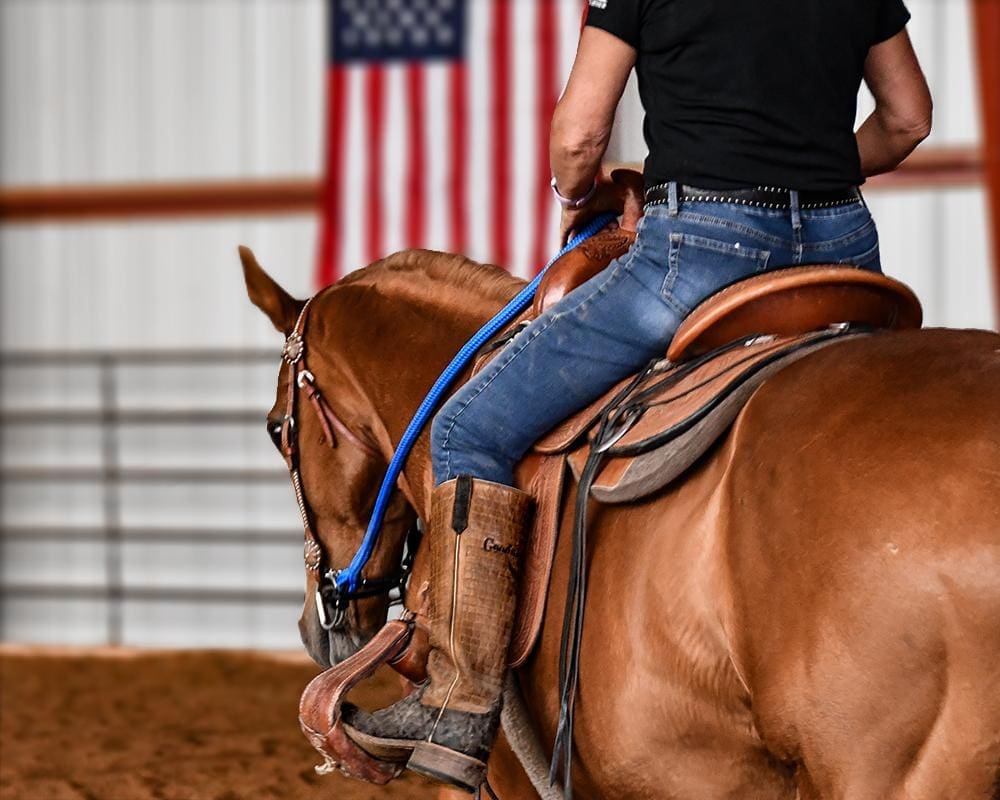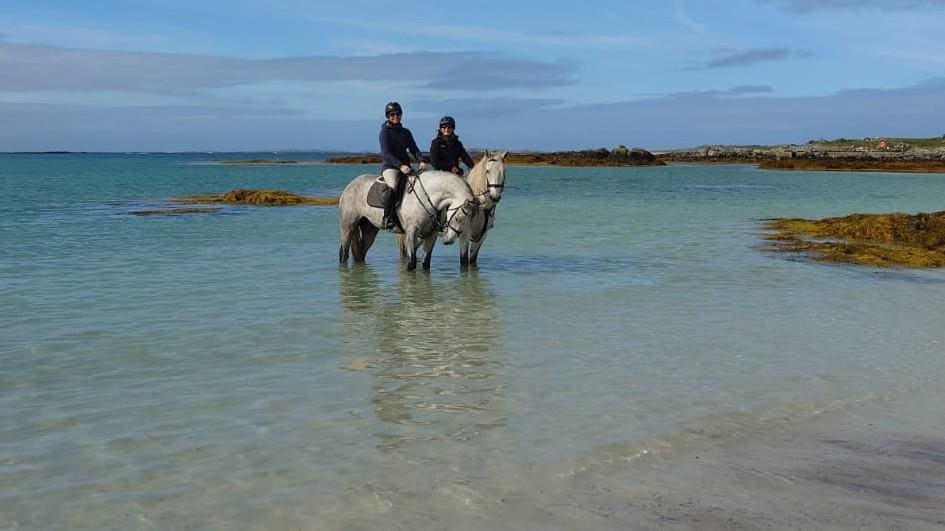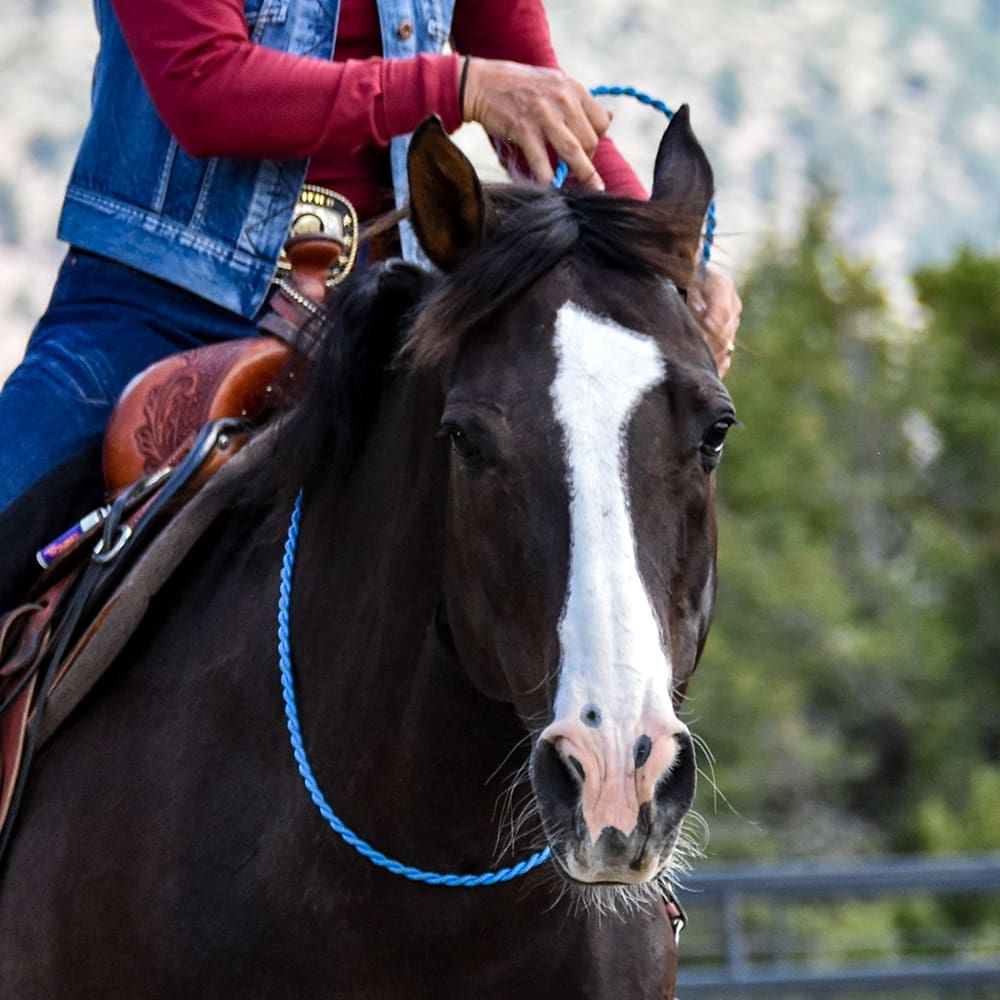I’ve just recently returned from a great clinic. It was a great group of riders and horses and I enjoyed working with all of them. We had green horses, finished horses, novices and experts, a variety of breeds and disciplines and everyone had fun and progressed well with their horse. I learned a long time ago that the more I can help the people, the better off their horses will be.
I don’t always know exactly what topics I will cover in a clinic because the content is often shaped by the group. Although I have some standard sessions that I always include in a clinic—the fundamentals of our sport that all riders need refreshing on—often people in the clinic have specific goals or issues to work on. I start each clinic by asking the riders to introduce themselves and their horses, and ask them specifically what they want to work on throughout the weekend. I always make a list, to make sure I cover it all.
For the most part, the lists from one clinic to another all look more or less the same: control, communication, hone riding skills, confidence, bit problems, slow down/speed up, canter cue, leads, and of course, the inevitable, flying lead changes. Sometimes a person has a specific training issue, like their horse won’t take the right lead or their horse won’t bend to the right and so on.
At this clinic, I one of the riders was a lovely woman from Arkansas, who had hauled her Paint mare eight hours to ride in the clinic. MaryAnn was a sponge of a student—my favorite kind. She was knowledgeable, experienced and a very good rider that couldn’t learn enough. In the introductions, she stated that her biggest problem was that her horse bucked at the canter. Never a good thing.
We did ground work all morning, and the mare seemed pretty good; MaryAnn seemed to have a good handle on her. I started getting the picture that the mare perhaps had a touch of what I call PMS. Pissy Mare Syndrome. Kind of cranky and kind of bossy, but overall doing what MaryAnn asked of her.
It wasn’t until after lunch that I first saw the mare under-saddle. As we warmed up at the walk and trot I didn’t see much that concerned me; although the mare was a little cranky, she did everything asked of her. The first time I ask people to canter, in a clinic with 15 horses that are unfamiliar to me, I always ask them to canter two or three at a time. That keeps my blood pressure down.
When it was MaryAnn’s turn, her horse stepped right up to the canter on the correct lead, but as she proceeded around the arena, it was obvious her horse was not happy—crow-hopping around like a pogo stick with her tail was wringing like a propeller. Unlike a cold-backed horse (check out my Training Library if you aren’t sure what this means), the mare didn’t warm out of it. Taking a closer look at the picture, my mind went immediately to a physical problem; specifically a saddle fit issue.
MaryAnn had a very nice saddle with a Wade tree—a popular kind of Western saddle that is built up in front with a deep seat to help keep the rider seated. Very popular amongst colt-starters, for the same reason MaryAnn liked it—helps you ride through the bucks. Although it was the right saddle for MaryAnn, it just wasn’t the right saddle for the mare.
When I evaluate the saddle fit on a horse, the overall balance is important, as well as checking some specific areas on the horse. If I step a few paces back and look at the horse from the side, I want to see the saddle (be it English or Western) sitting pretty level on the horse’s back. If it is sitting downhill, the horse’s shoulders or withers could be uncomfortable and if it is sitting uphill, the horse may be getting undue pressure at his loins. In either case, the rider’s balance and position is impaired when the saddle does not sit level and balanced on the horse.
I could see from looking at MaryAnn’s saddle, and the uphill slant, that the horse was getting a lot of pressure on the loins from the way the saddle fit her. It is not surprising she protested the canter since she has to round up her back and lift it with each canter stride; not to mention that the rider’s weight can come down hard on the saddle at the canter. So I tactfully suggested that perhaps MaryAnn might like to try the demo saddle I had brought to the clinic. I knew the saddle she had was not cheap, nor was it the first one she had purchased for this mare, so I know the thought of getting yet another saddle to resolve this problem was not what she wanted to hear. But of course she did.
It was at the end of the first day—all the horses and riders were beat an headed for the barn, but quite a few spectators stuck around to see what happened when MaryAnn tried the new saddle. She trotted a circle or two and cued her horse up to the canter. Although the mare still seemed tense and tight in the back—there was a noticeable improvement in my opinion and many of the spectators saw it too. Unconvinced, MaryAnn was eager to try the saddle again the next day.
After the ground work, MaryAnn saddled her horse with my Monarch Arena Performance/Trail saddle. We spent a long time working at the walk and trot and when she cued her horse for the canter, she was smooth, relaxed and with her ears perked forward. Gone was the crow-hopping, wringing tail and pinned ears. MaryAnn went home with a brand new saddle and a smile on her face, thanks to her sweet husband who watched the transformation and bought the saddle before MaryAnn got off her horse.
It’s amazing how often horses work day in and day out with ill-fitting and inappropriate equipment. Imagine working on your feet all day in shoes that caused you pain. Did you ever notice the number of horse’s that have white pots on their backs? Did you know those white hairs are scars caused from pressure points? Sometimes, when the fit-issue is fixed, the hair color comes back but over time the scars become permanent.
The other things that are important to check on the saddle is the clearance at the withers (can you stick your whole hand in there?)—even the pad pressing on the withers can cause painful pressure. Check to make sure it is not pinching at the withers at the front of the tree and, in the case of Western saddles, that it is not too long for the horse and or pressing into the loins or hips.
Most of the saddles in my line of saddles made by Circle Y have a Flex2 tree. Although the flexible tree is not suitable for all riders (can’t rope in it; the rider must weigh under 230#), it offers greater comfort to the horse and fits a wider variety of horses than a traditional wood tree Western saddle. It has enough rigidity to distribute the weight of the rider while flexing enough to conform somewhat to the horse’s back. As the bars of the tree flex slightly, the front of the bars open up just a little, giving the horse much more freedom in the shoulders.
Since I have a demo saddle with me everywhere I go, I’ve tried it on a lot of different horses around the country and have been very impressed by the fit and balance to most horses. The design of my saddles also takes the rider into consideration—the saddle should be fitted to horse AND rider and be comfortable for both. So for the rider, my saddles have a very narrow twist (the part that is just in front of the seat), close contact to the horse’s sides, highest quality pre-softened leather, pre-twisted stirrups and memory foam in the seat. Need I say more?
The seat size of the saddle should be comfortable for the rider—neither riding on the cantle or crowded by the pommel. With Western saddles, the style of the saddles vary so greatly that you probably need to sit in a saddle, to know for sure how it fits you. The stirrups should be the right size for your feet with the leathers short or long enough so that you ride in the middle hole. The width of the saddle is important too—you should not feel outward pressure on your seat bones or get the feeling that your legs are being wedged apart. The comfort and balance of your saddle are huge factors in how well you ride so these are things you don’t want to compromise on.
There is much to know about saddle fit, for both horse and rider, and I always appreciate advice from professional saddle fitters. I am by no means and expert but after decades in the business and working with thousands of horses and riders, I’ve developed an eye for it. If you’re not sure about the fit of your tack, consult a professional and get the best advise you can. If your horse has “issues” under-saddle, always consider a physical cause first. If you have “issues” in your riding, you may want to check your saddle.
I’m glad I could help MaryAnn and her mare and I look forward to hearing more about how they progress. One down, thousands to go!
Enjoy the ride,
Julie


